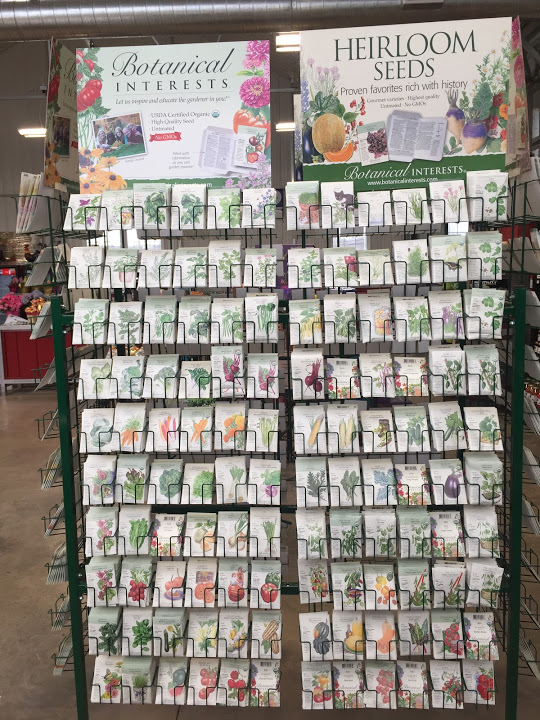Seed Shopping Tips
FINALLY! It’s time to get out in the garden and start planting early crops. For weeks now we have been watching the weather forecast with disgust. Kinda warm one day, and then winter’s wrath the next! During this time I’ve done what any gardener does – shop for seeds!
When it comes to buying seeds, it’s a good plan to start shopping early. I start looking for ideas for my landscape and garden all the time, but I start seriously planning in February and March. This is where magazines and Pinterest come in particularly handy.
The next seed shopping tip that you want to consider is having a plan for your garden and landscape. You want to consider your space, budget, and the qualities that are important to you. Do you want tall, showy flowers or a more compact look? What about plants that need shade versus light? These are all considerations that are better to make on paper before visiting the store. Otherwise, you end up like me, staring at the seed display in a befuddled trance.
When considering the vegetable garden, you want to come up with a list of favorite, must have varieties that you know you will use. You want to consider how much of each item you want to plant. (Step away from the cucumber seeds. … All your neighbors will thank you.) Along those same lines, you should limit experimentation with new varieties. If it turns out you don’t like that exotic, new vegetable or flower, or it doesn’t perform well, you might wish you planted something else instead. I try to limit myself to a few experiments so I don’t waste time and space if it’s a flop.
Also, don’t forget flowers for the veggie garden. They add a pop of color, and there are quite a few varieties that are edible. I’m experimenting with growing some colorful quinoa this year. There are also flowers, like marigolds, that can be beneficial to surrounding plants by repelling insects.
Finally, always buy some extra seeds of your favorite varieties. That way you can stagger planting for a continuous harvest. You can also easily store excess seed in a cool, dark place. Keeping them in the fridge is a great option. We actually store our seeds in a huge walk-in cooler at Bob’s at a balmy 40 degrees Fahrenheit.
With these tips, you should be ready to get out there and start planting. If you grow heirloom varieties, collect a few at the end of each season. Share them with gardening friends. You’ll be taking part in a tradition that has taken place since the beginning of time.


